Health
Special Report: A peep into Ahidjo’s many dreams and visions of making the UMTH biggest hospital in Nigeria (2)
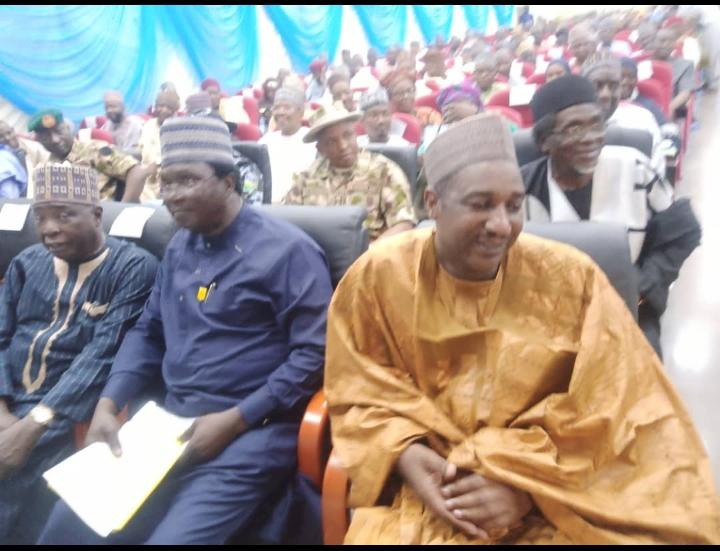
Special Report: A peep into Ahidjo’s many dreams and visions of making the UMTH biggest hospital in Nigeria (2)
By: Bodunrin Kayode
The recent celebration, however, of forty years of the UMTH by Professor Ahidjo and his team was a clear indicator that the facility has come of age and there is a need to begin to plan for the next 40 years. And this must be done by facing obvious embarrassing challenges like hiccups in the electricity supply and the rest. I mean taking each one as it comes. Life in his own specialty, which is interventional radiology, would be miserable without steady electricity and computerization of the entire facility if he finishes his second term. Imagine going back to his office after his second term and having to open the windows for fresh air if the cooling facilities are not working. That is why he is working double hard now to fix the fixable.
After the on-going new structures and electricity supply, the right equipment to last for at least the next decade and up-to-date professionals by way of training and retraining is very paramount.
40 years have passed, and the UMTH is still standing. Serving humanity was pronounced on the day of its ceremonial opening by the late Alhaji Shehu Shagari on July 23, 1983. So many waters have literally passed under the bridge, and so many professionals have passed through the narrow corridors of the hospital and retired. My mind goes to the American-trained Professor Emeritus Babatunji Omotara, who is the father of environmental epidemiology. Many have also left since the insurgency started in 2009, while many others have stayed back.
From the day the government started building a specialist hospital on the site until the day the federal government took over and completed it as a one-stop-shop teaching hospital, it has been of the highest standards expected in a third-world country. The first patient was really admitted on February 18, 1982. Although so much still needs to be done to ensure that the level of dilapidation over the years is reduced to a tolerable level, much is also expected from management about the training of certain scarce personnel as soon as all the structures are completed.
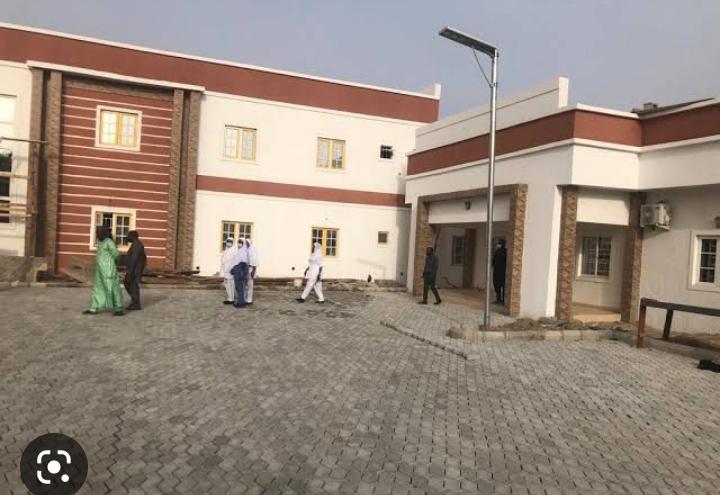
Cancer Centre
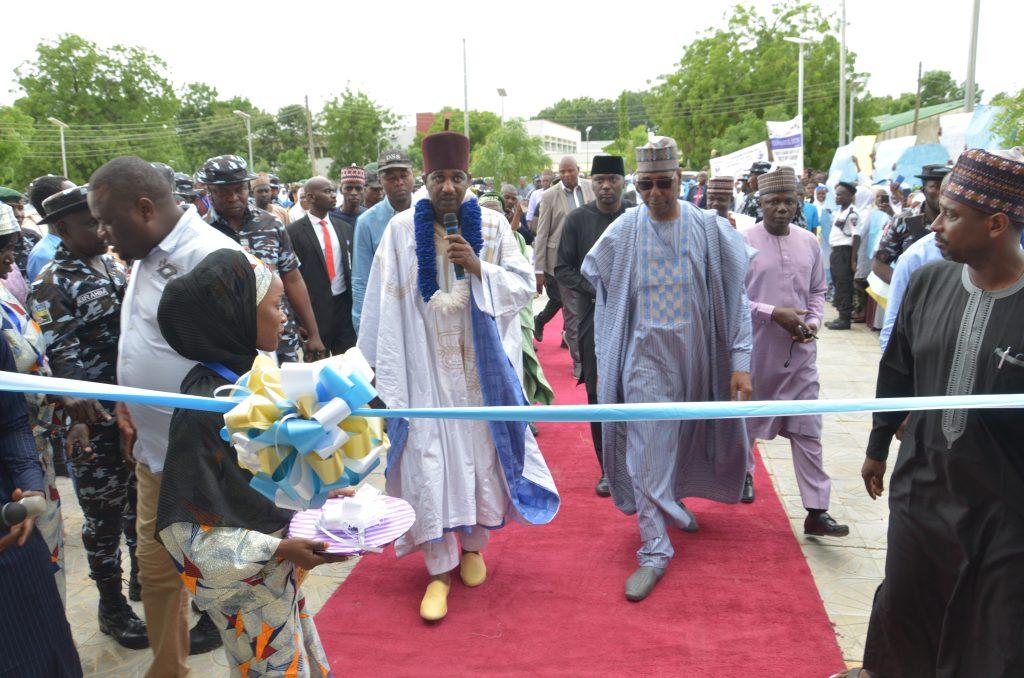
Just before Professor Mala Sandabe took over as the CMAC, I had hinted to then-CMAC Professor Bashir on the medical records people relationship with sick patients and thereby redirecting the standards of the hospital. He took note to do something about it, and he really did start by making so many moves to correct the wrongs.
I went on another day this time as a patient for treatment, and I saw the way one of the medical records people was speaking to a pregnant woman upstairs at the Obstetrics and Gynecology (O and G) department. I felt really sad that the medical records staff was doing it as if it were her right to speak as such before patients would conform to her directives, even if she was as illiterate as they always presume. This was because she was obviously untrained, and her manners were normal in a hospital, which should compete with a library for silence. How do you ask a pregnant woman in her third trimester if you were responsible for her pregnancy? Who makes such unguarded statements in a hospital? I ended up in the office of Prof. Sandabe and told him the exact location of where I saw the wrongdoing, and he promised to correct it, and this too was done.
Apart from some of these expected excesses, the hospital has been absorbing so many categories of patients, ranging from cases that should have gone to the primary and secondary hospitals before referrals. But I don’t blame them. Hospitals like Umaru Shehu, where Governor Babagana Zulum has done so much to lift the standard, were before now contributing factors for UMTH to admit patients that should have gone through the primary and secondary hospital before referrals. ‘That is why everyone goes to TH’, as the facility is referred to in Maiduguri. Yet they still tug on like the giants they are in the region, even finding time for certain forms of research, as was mentioned by the CMD during the news conference to herald the flag-off of activities to mark 40 years. Right now, they are looking into the prevalence of kidney challenges in Borno as a whole. And we expect the result to be out very soon.
READ ALSO: https://newsng.ng/police-witness-tells-iip-sars-how-peter-ekwealor-slumped-after-allegedly-confessing-to-killing-asp-akoh-ude/
Before The unbundling of the single-stop hospital structure.
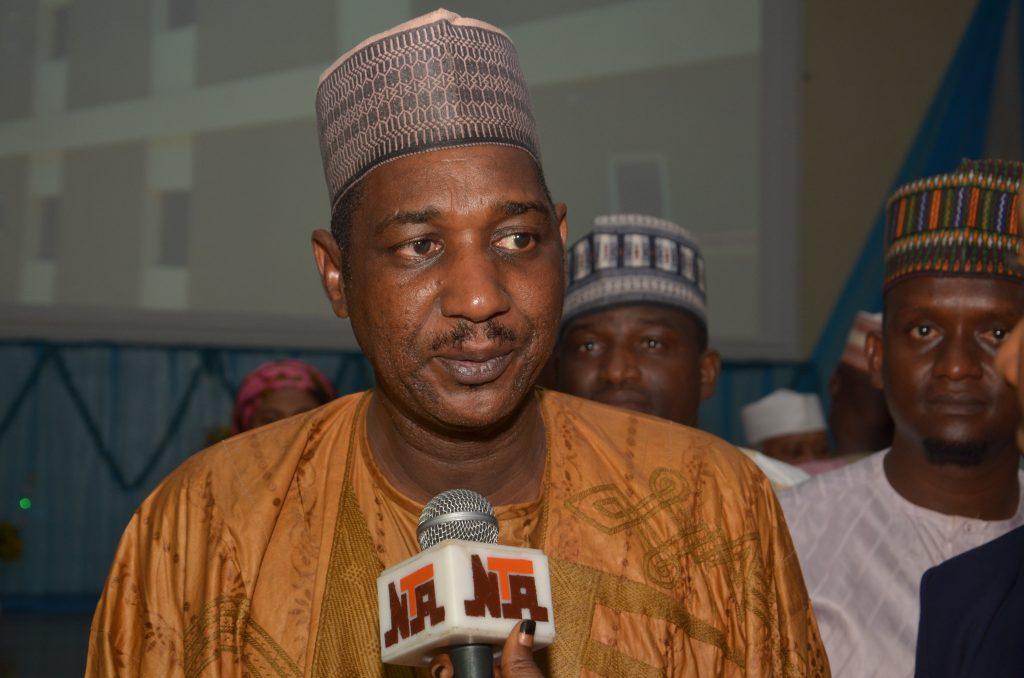
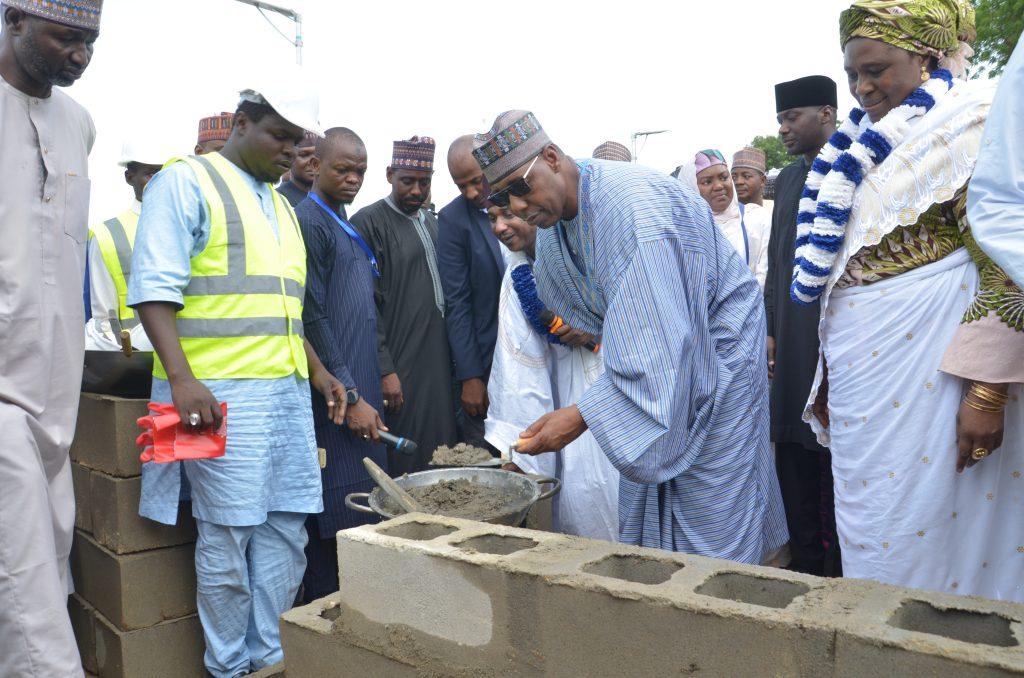
A lot of history has been recorded during the first tenure of the CMD, but I paid special attention to the old structure built by the COSTAIN construction company, where the late Emeritus Professor Umaru Shehu occupies the second floor like the colossus that he is. He was not my focus when Prof. Ahidjo took over the management of the facility. I actually wanted to see Professor Babatunji Omotara, who is now retired after 40 years of training medical practitioners. So I climbed up the two-story building, sat in his old, moderate office, and we had our first chat on cholera. He responded briskly because the disease was killing lots of people at the Muna garage axis of Maiduguri, and I needed to add the perception of community medicine in my report to sound more professional with my sources. He stood up and asked me to please allow him a minute to ease himself, then returned to our discussion on how to stem the tide of the spread of cholera, which had gone out of hand and was killing people daily.
I expected him to use a private facility just within his office to suit his status as a professor. But he took a bunch of keys and headed to a shared facility outside his office. That, to me, was strange and needed correction. It occurred to me that something really had to be done to make these academics a bit more comfortable than some of them are now. A senior professor of such high status must have his own convenience and kitchenette so that he can function very well without too many distractions. It should not be optional in case he did not demand it. Returning downstairs, I discovered the building was leaking due to heavy rains. It leaked on the ground floor, which used to house the CMD’s before now. Sources allege that the leakage was from a tank upstairs instead. Whatever it was needed correction.
The newly promoted consultants without offices walked on the water into their MDCAN office to hang out while waiting for their calls. It’s obviously an old building, even though it has not yet expired, based on my findings at the works department. But something had to be done to correct so much wear and tear that had occurred over the years because it would surely become obsolete one day and expire. That is when such buildings should be pulled down due to old age if known contemporary technology must be applied. But to preempt that time, one could understand that the CMD, who was born into a family whose father was a builder in Maiduguri, can easily see through these weak structures and is creating a plan B for almost all of them before they hit about 100 years and expire and must go one day.
Many other problems need attention in the hospital. Problems like finance have bedeviled the facility and forced the CMD to begin to hunt for plan B’s and C’s to keep the hospital community going. He actually stressed the issue of finance as a major problem affecting the management of the hospital during a news conference to announce the flag-off of activities for 40 years of the hospital. To Ahidjo, “if finance is settled, we would have cash to do a lot of things, including lighting up the new facilities scattered around the compound.”
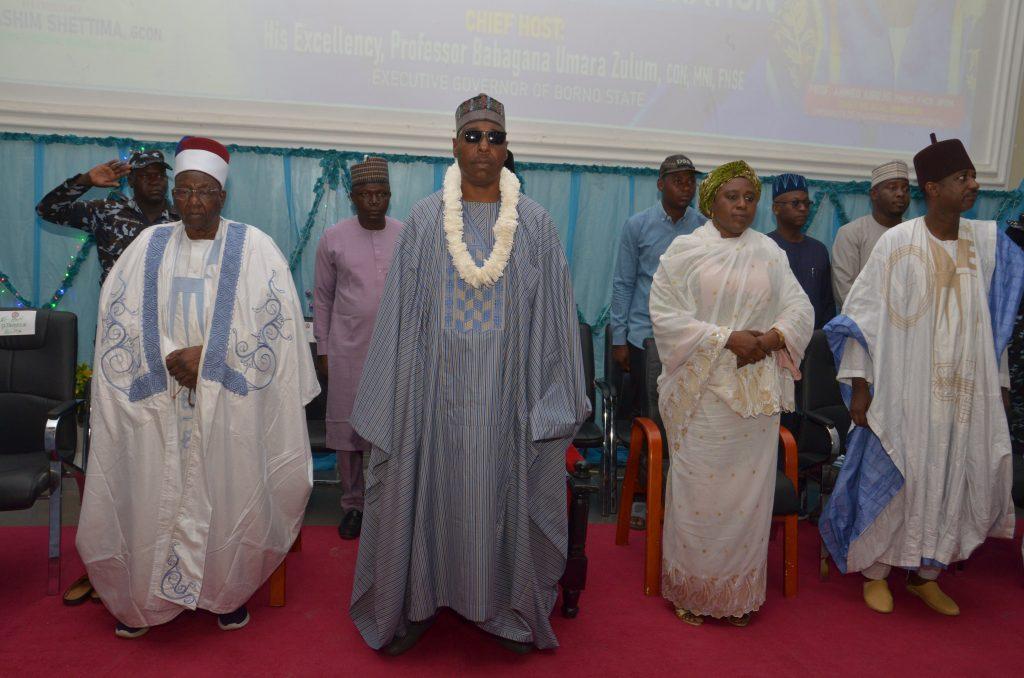

Perhaps due to serial disappointments from the Yola electricity company, the CMD has gone beyond the level of complete reliance on diesel for the generation of electricity. Most of the facility has backup electricity due to solar panel supplies, which are relatively cheap due to the abundant sun in the savanna. Whatever foundation was set by the first indigenous CMD, Prof. Suleiman Lagundoye, in 1984–85 needs a lot of fine tuning by the first CMD to think of a futuristic plan to absorb the endless expansion brought about by modern medicine. These new structures have increased the beds in the facility beyond imagination, making it the largest hospital in the country today by way of capacity to admit and treat.
READ ALSO:https://newsng.ng/the-plight-of-farida/
For the record, the 40-year celebration proper
The celebration proper was quite elaborate. It was handled by a committee that was chaired by Professor Shehu Liberty of the Department of Public Administration, with members like Professor Danjuma Gambo of the Mass Communications Department of the University of Maiduguri (UNIMAID).
It started with Friday prayers on the 14th of July and extended to Sunday, July 23rd. A special church program was held on Sunday, July 16th, followed by a press conference held in the conference room of the hospital administration block the following day. Other highlights of the celebration included a walk around the giant old hospital structure led by the CMD and management team and several union leaders, including the association of resident doctors, the Pharmaceutical Society of Nigeria (PSN), consultants and their MDCAN colleagues, the nurses, who are the largest union on the ground, and some of the gentlemen of the media. Touching on social responsibilities, a medical and surgical outreach was held in Kaleri and Gwange wards in the city of Maiduguri and a surgical outreach at the new trauma center of the hospital.
There was also a day for career guidance at the Zulum auditorium and conference center for young people. That was followed by two public lectures in the same hall. Former President of the Nigerian Labour Congress, NLC, Ayuba Wabba, and former CMD Professor Idris Mohammed gave the anniversary lectures. Wabba wanted unity among all the players in the sector in a long lecture, but that is for another day.
They also had the commissioning of the child and adolescent center and the foundation-laying ceremony of some legacy projects by vice president Kashim Shettima. This was followed by a dinner and award night at the multipurpose hall of the government house in Maiduguri. Several individuals were given special prices for their contributions to making the facility stand to this day, in spite of the lingering torment of the insurgent Boko Haram in their backyard. I would have written a book if I continued the sequence seen over the last four years in this facility. But not to bore my readers, I will be running the highlights of the lectures separately at the fullness of time. Those treaties released by the two lecturers really need special handling, especially that of Comrade Wabba, who called for unity among warring professionals within the health sector.
Special Report: A peep into Ahidjo’s many dreams and visions of making the UMTH biggest hospital in Nigeria (2)
Health
Yobe to establish dialysis center in Gashua
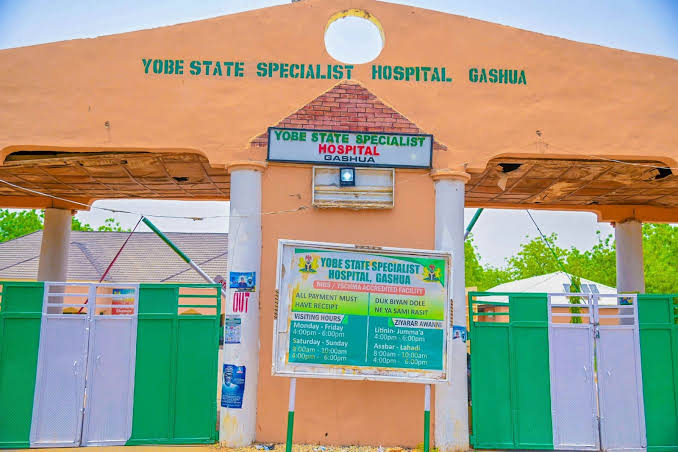
Yobe to establish dialysis center in Gashua
By: Yahaya Wakili
Pending the recommendations of the research being conducted by Bio-RTC in addressing the problem of Chronic Kidney failure in the state. The Yobe state government will establish additional succor to kidney patients with a Renal Dialysis Center in Gashua, the headquarters of the Bade local government area.
Yobe State Governor Hon. Dr. Mai Mala Buni CON, COMN, disclosed this in his 2026 budget proposal speech of #515.583 billion submitted to the Yobe State House of Assembly in Damaturu.
Governor Buni said the government will also construct a new general hospital in Potiskum to address the problem of overcrowding of patients at the specialist hospital.
According to him, the government will also intend to complete the rehabilitation and upgrade of the 36 remaining primary health care centers across the state in fulfillment of our campaign promise to provide one functional primary healthcare center in each of the 178 political wards.
He further said in the fiscal year, the government will embark on the provision of at least one model primary school in each of the 178 electoral wards in the state to improve basic education in the state.
He maintained that the modern markets in Geidam, Buni Yadi, Ngalda, Yunusari, and Machina will be completed and commissioned, adding that these markets will not only improve the commercial activities in the state but will further provide job opportunities to our teeming youths and increase the income of our people.
Governor Buni revealed that funds would be made available for the provision of power substations in 6 major towns of the state. In addition to the provision of solar-powered streetlights, 250 KVA, 500 KVA, and 800 KVA diesel soundproof generator sets would be distributed to government agencies across the state.
Yobe to establish dialysis center in Gashua
Health
UMTH: Another Cap for the Chief Medical Director: Prof. Ahmed Ahidjo’s Distinguished Govtech Trailblazer Award
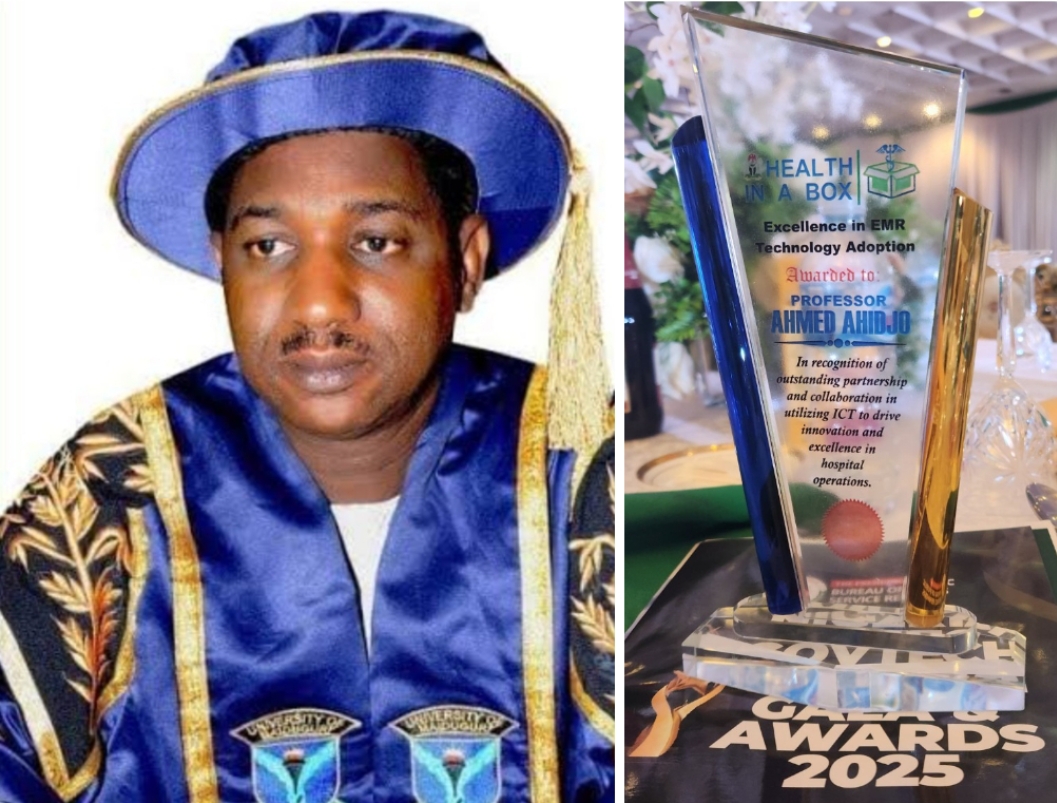
UMTH: Another Cap for the Chief Medical Director: Prof. Ahmed Ahidjo’s Distinguished Govtech Trailblazer Award
By: Dr. James Bwala
The evening of October 10th, 2025, marked a significant milestone in the annals of the University of Maiduguri Teaching Hospital (UMTH), for emerging as the Best Federal Health Institution in ICT Integration. Also the Chief Medical Director (CMD), Prof. Ahmed Ahidjo, was honored with the title of Distinguished Govtech Trailblazer. This recognition, conferred by the Bureau of Public Service Reforms at a grand ceremony held in the Presidential Villa in Abuja, is a testament to his unwavering commitment to healthcare innovations and exemplary leadership within the public sector. Such an award, unprecedented in its scope and depth, underscores not only his personal achievements but also reflects the collective progress of UMTH under his stewardship.
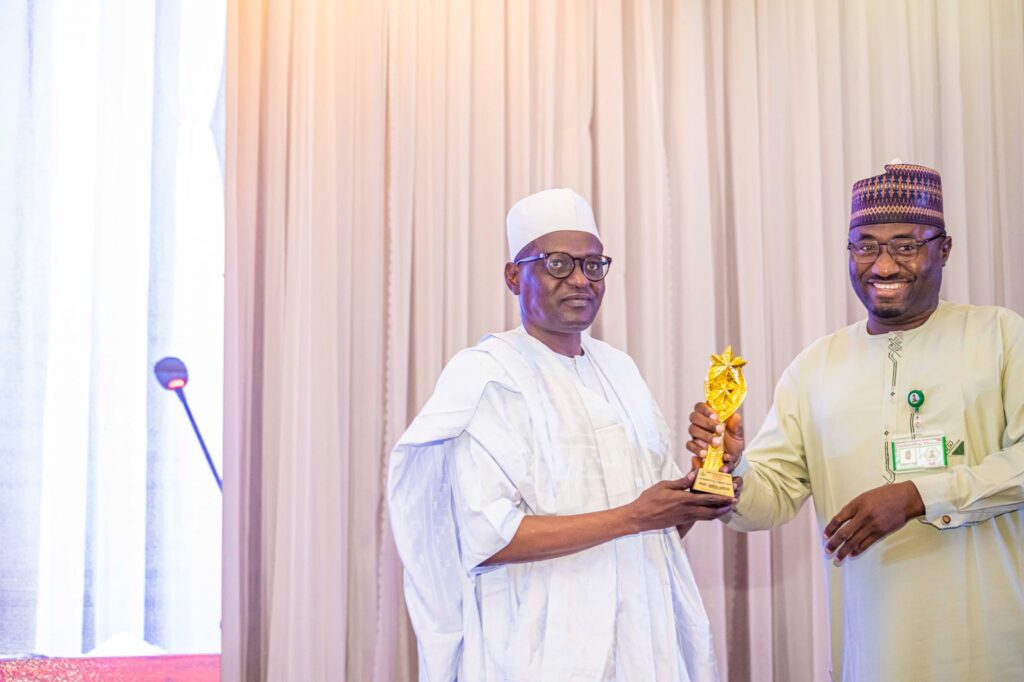
As guests filled the ornate hall of the Presidential Villa, anticipation buzzed in the air. The decor, infused with symbols of Nigeria’s rich cultural heritage, echoed the significance of the event. Among those present were notable figures from various sectors, including former board chairman at UMTH, Hadi Ukashatu Gumel; CMAC Prof. Modu Baba Kagu; DCMAC Clinicals Prof. Buba Faruq; PA to the CMD Dahiru Hammawa; Head of ICT Ismail Hashim; Engr. Maaji Shettima; and Mr. Peter, representative of Health in the Box. Their presence highlighted the collaborative efforts that characterize Prof. Ahidjo’s leadership style—a leadership that emphasizes teamwork, accountability, and innovation.
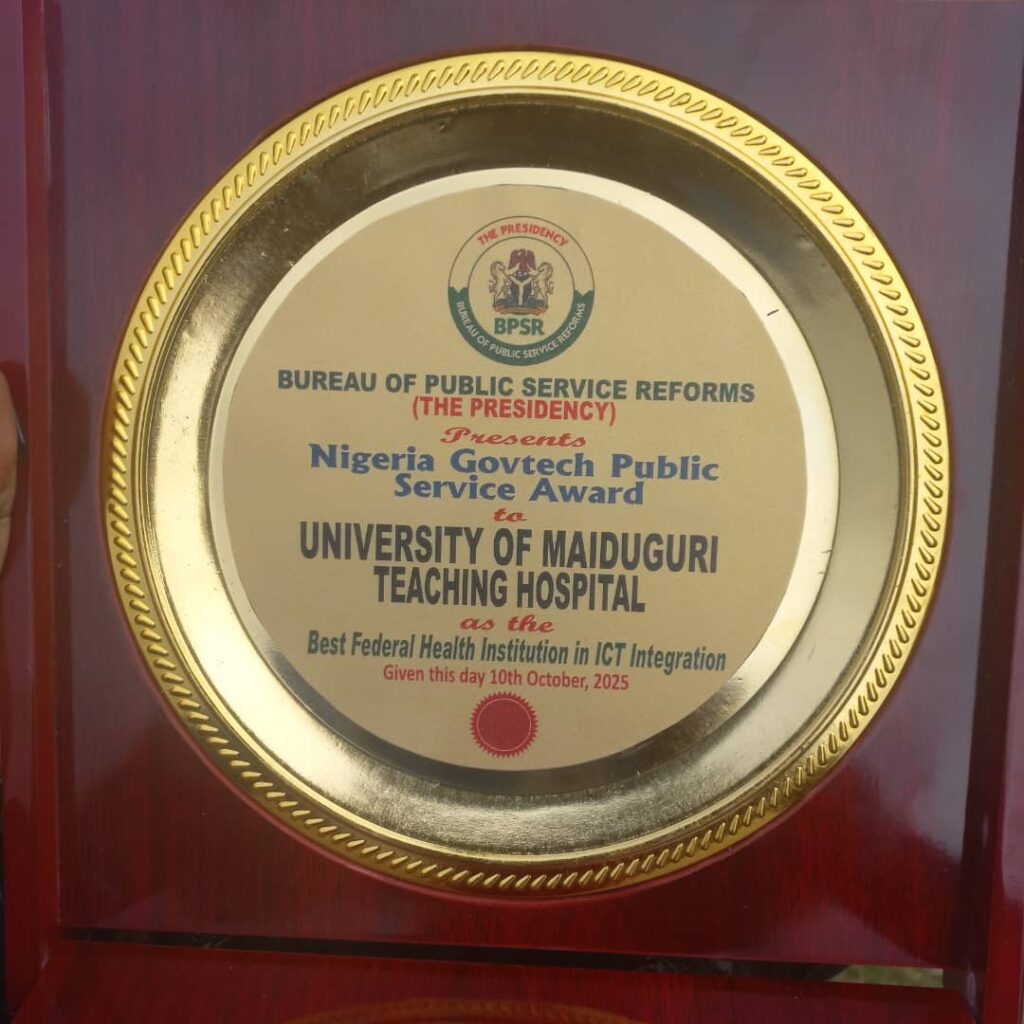
Prof. Ahidjo’s journey to this prestigious award is marked by a robust track record that distinguishes him as a goal getter. Since assuming the role of CMD at UMTH, he has championed numerous initiatives aimed at transforming the hospital into a beacon of excellence in healthcare delivery. His foresight in integrating technology into the healthcare process has not only streamlined operations but also improved patient outcomes significantly. Under his guidance, UMTH has embraced digital transformation, facilitating telemedicine services, electronic health records, and comprehensive data management systems—all pivotal in the ongoing evolution of healthcare in Nigeria.
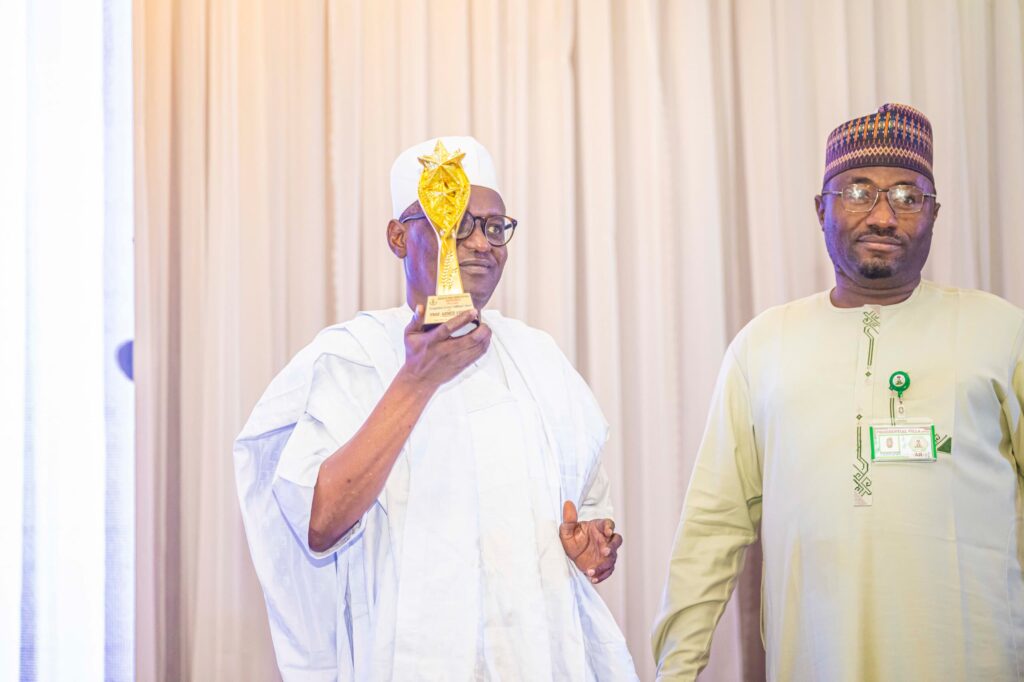
The Distinguished Govtech Trailblazer award acknowledges those who have made substantial contributions to government technology advancements and public service reforms. Prof. Ahidjo’s tenure exemplifies this principle, as he led initiatives that have enhanced the efficiency of healthcare services across the region. For instance, his collaboration with local tech firms to develop the Health in the Box initiative embodies innovative solutions to pressing healthcare challenges. This program leverages technology to provide remote health services, bridging the gap between urban healthcare facilities and rural communities, thereby ensuring equitable access to essential medical resources.

The award ceremony itself was a reflection of commendable partnerships forged between government institutions and private entities, designed to uplift public service through technological advancements. As Prof. Ahidjo, represented by the former chairman of the board, ascended the stage to accept the award, there was a palpable sense of pride among attendees, particularly those from UMTH who had witnessed firsthand the relentless efforts of their chief medical director.

In his acceptance speech, Prof. Ahidjo expressed gratitude not only for the recognition but also for the collective effort of his team. He acknowledged the invaluable contributions of the hospital staff, whom he described as the backbone of UMTH’s successes. His emphasis on teamwork resonated throughout the audience, reaffirming the notion that individual accolades are often the results of cooperative endeavors. He further dedicated the award to his colleagues, emphasizing that the honor is reflective of the strides made by the entire institution.
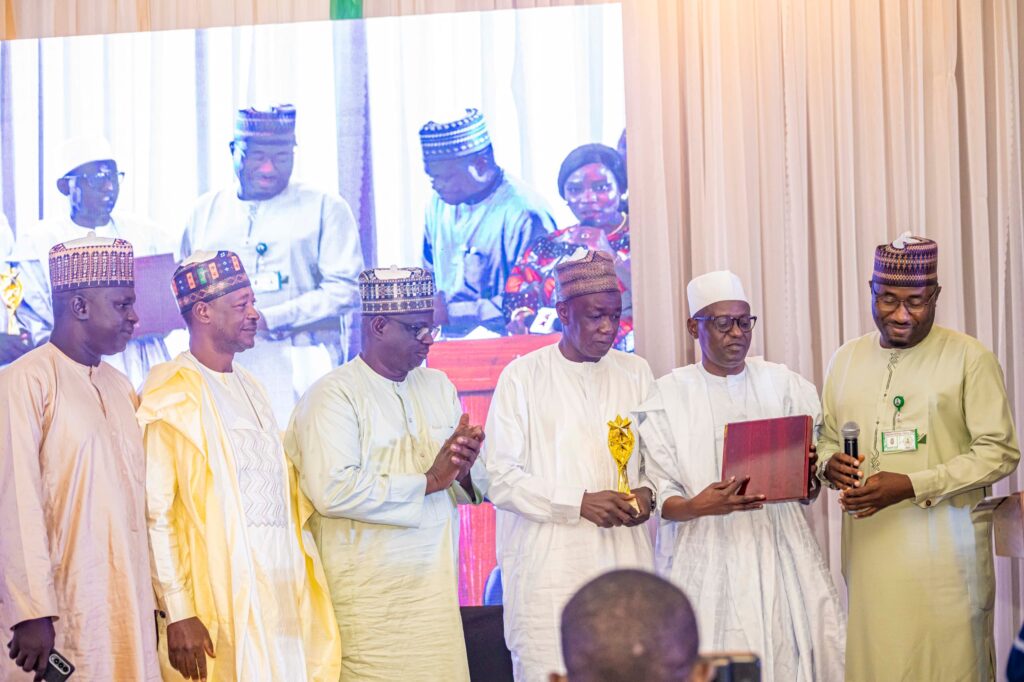
The presence of key figures like DCMAC Clinicals Prof. Buba Faruq and Head of ICT Ismail Hashim underscored the breadth of support for Prof. Ahidjo’s vision. They encapsulated the sentiment that the award serves not just as recognition for past accomplishments but as a call to action for continued innovation and excellence in the face of ever-evolving healthcare challenges.

The event showcased a tapestry of emotions—pride, enthusiasm, and an invigorated sense of purpose. Attendees were treated to a series of presentations highlighting UMTH’s recent advancements, notably the implementation of smart technology in patient management and the establishment of a state-of-the-art emergency response center. These developments were evidence of how visionary leadership can steer a traditional healthcare system toward modernization.

Furthermore, the award also sparked discussions among stakeholders about the future of healthcare in Nigeria. Attendees, including representatives from government agencies and health technology firms, engaged in dialogue about opportunities for collaboration and investment in health tech. The consensus was clear: as Nigeria faces increasing healthcare demands and challenges, embracing technology is not merely beneficial; it is imperative.
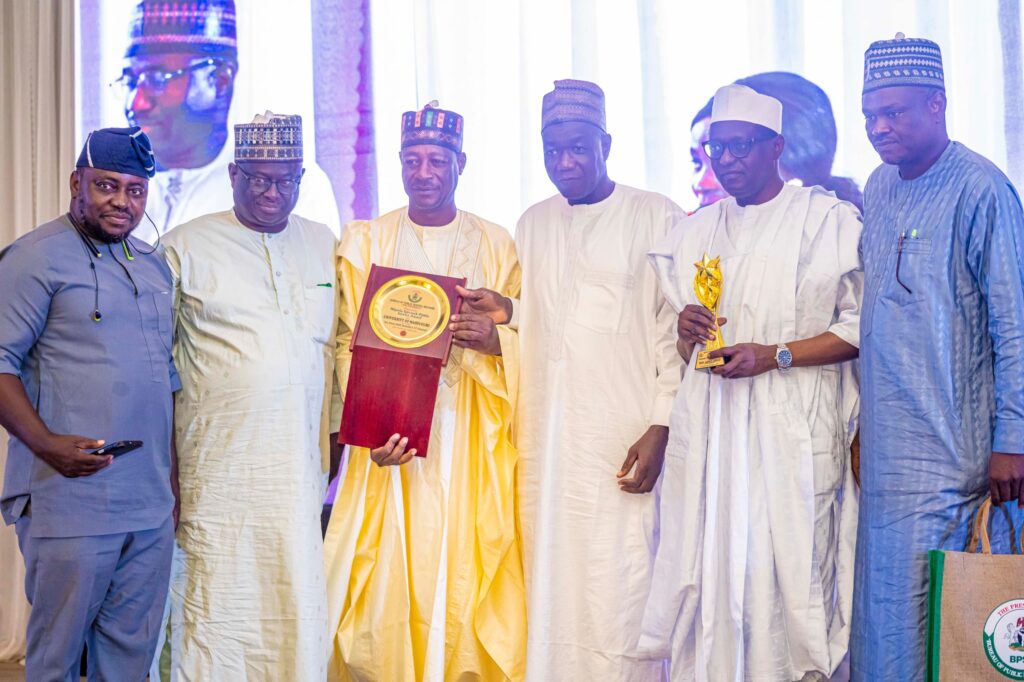
The culmination of the event was a networking session where ideas flowed freely, fostering a spirit of collaboration that promises to enhance the landscape of healthcare delivery in Nigeria. Prof. Ahidjo’s influence extends beyond UMTH, as his leadership and vision inspire peers and upcoming healthcare professionals to strive for excellence in service delivery.

His recognition as a Govtech Trailblazer enriches the narrative of health reform in Nigeria, illustrating the pivotal role of innovative governance in public health. Prof. Ahidjo stands as a beacon for aspiring leaders, showcasing that with resilience, foresight, and collaboration, transformative change is attainable.
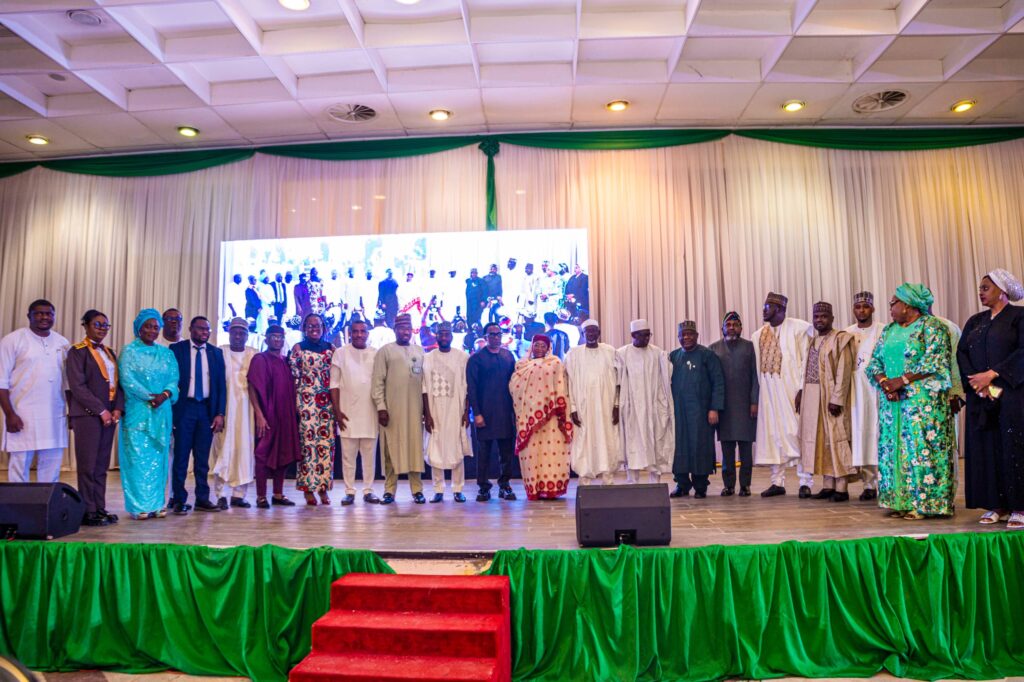
The Distinguished Govtech Trailblazer award conferred upon Prof. Ahmed Ahidjo not only celebrates his exemplary service but also symbolizes a broader movement towards modernization and efficiency within Nigeria’s healthcare system. As UMTH continues to flourish under his guidance, it is poised to lead by example, proving that strategic leadership and technology integration can radically enhance the quality of public healthcare services. The future appears bright, promising further advancements and recognition for the institution and its steadfast chief medical director, Prof. Ahidjo, who wears this new cap with unparalleled dignity and commitment to progress.
* James Bwala, PhD, writes from Abuja.
UMTH: Another Cap for the Chief Medical Director: Prof. Ahmed Ahidjo’s Distinguished Govtech Trailblazer Award
Health
UMTH wins the 2025 Public Tertiary Healthcare Facility of the Year Award.

UMTH wins the 2025 Public Tertiary Healthcare Facility of the Year Award.
By: Dr. James Bwala
The University of Maiduguri Teaching Hospital (UMTH) has once again demonstrated exceptional commitment to healthcare excellence by winning the 2025 Public Tertiary Healthcare Facility of the Year Award for the second time. This accolade underscores UMTH’s sustained efforts in providing high-quality medical services, advancing clinical research, and fostering an environment conducive to both patient care and academic development. Such recognition not only highlights the institution’s leadership within Nigeria’s healthcare sector but also reflects its pivotal role in addressing complex health challenges in the region.
This is a big congratulations to the CMD, Professor Ahmed Ahidjo, and his management team for another historic achievement. Winning this award consecutively signifies UMTH’s ability to maintain superior standards amidst evolving healthcare demands. The hospital’s integration of innovative treatment protocols and community-oriented outreach programs exemplifies best practices that contribute significantly to public health outcomes. As a teaching hospital, UMTH also plays a critical role in training future healthcare professionals, thereby ensuring a continuous supply of skilled practitioners dedicated to improving national health indices.
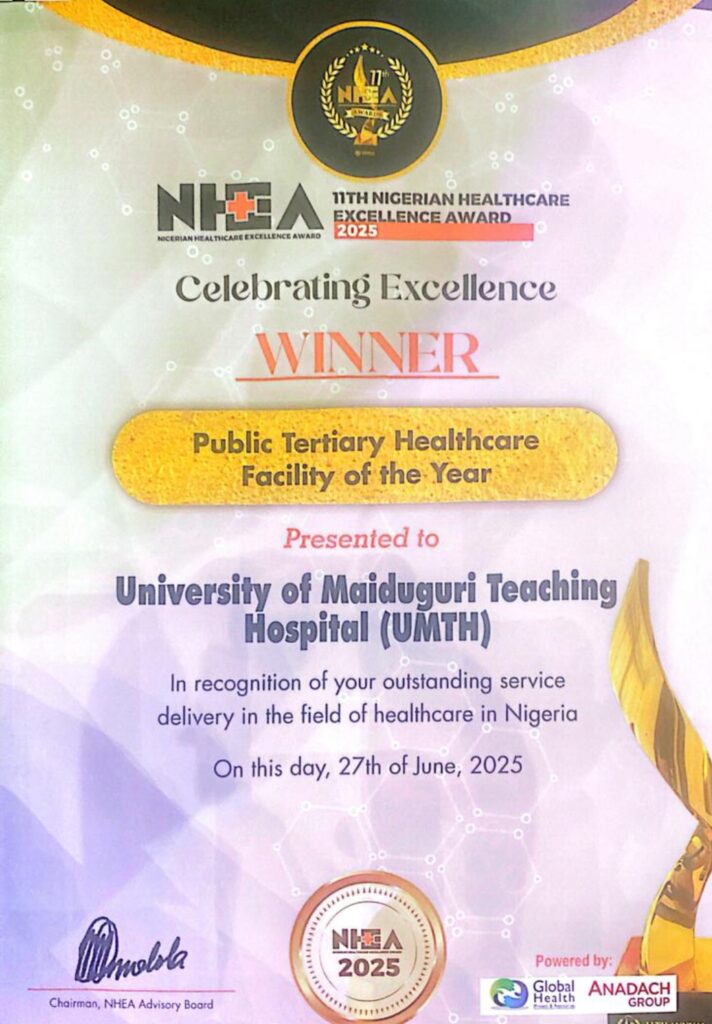
UMTH’s consecutive recognition as the top public tertiary healthcare facility reaffirms its status as a beacon of medical excellence and educational prowess in Nigeria. Maintaining such standards is essential for driving progress within the country’s healthcare infrastructure and enhancing patient care quality on a broader scale. UMTH’s strategic partnerships with global health organizations have facilitated the exchange of knowledge and resources, further enhancing its capacity to deliver cutting-edge healthcare solutions. This collaborative approach not only strengthens UMTH’s operational capabilities but also positions it as a model for other institutions aiming to elevate healthcare standards across the continent.
The hospital’s commitment to research and development has led to groundbreaking advancements in medical science, reinforcing its reputation as a leader in healthcare innovation and education. In addition, UMTH’s emphasis on patient-centered care has fostered an environment where individuals feel valued and heard. This patient-centered approach, combined with their ongoing commitment to excellence, underscores UMTH’s role as a pivotal institution in shaping the future of healthcare delivery in Africa.
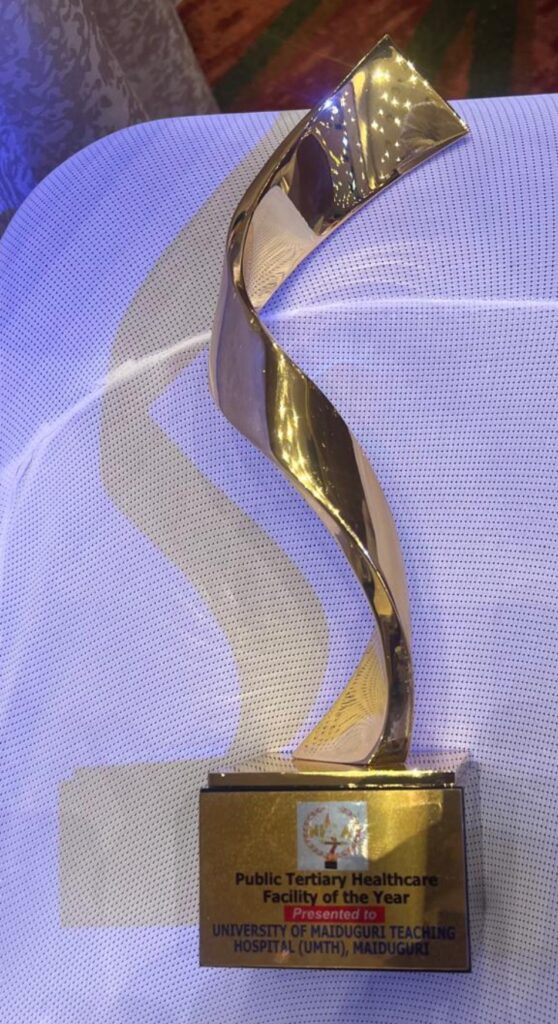
The hospital’s investment in state-of-the-art technology and infrastructure has also played a vital role in its ability to provide high-quality care and respond effectively to the evolving needs of the community. This dedication to leveraging advanced medical technologies and maintaining a patient-first philosophy has undoubtedly contributed to UMTH’s recognition at the national level, securing its place as a beacon of excellence in the healthcare sector.
READ ALSO: https://newsng.ng/the-plight-of-farida/
Professor Ahmed Ahidjo, the CMD, has printed his foot on the sand of history as UMTH’s success story. This success story serves as a testament to the power of strategic vision and dedicated leadership in transforming healthcare services for better societal impact. This achievement not only highlights the hospital’s ongoing pursuit of healthcare excellence but also serves as an inspiring model for other institutions aiming to elevate their standards of care and operational efficiency.
The award not only acknowledges the exceptional service delivery and innovative practices at UMTH but also underscores the hospital’s role in setting a benchmark for healthcare quality and patient satisfaction across Nigeria. This recognition is a testament to the hospital’s commitment to continuous improvement and its ability to adapt to the evolving challenges in the healthcare sector. This accolade not only highlights their exceptional service delivery but also reinforces their position as a leader in medical innovation and education within the region.
This commendation reflects UMTH’s unwavering dedication to nurturing future healthcare leaders through robust educational programs and cutting-edge research initiatives. UMTH’s dedication to fostering an environment of continuous learning and adaptation has enabled it to remain at the forefront of healthcare innovation. The recognition further solidifies UMTH’s reputation as a pillar of healthcare excellence. The hospital’s strategic focus on integrating advanced technology with patient-centered care has been pivotal in achieving these remarkable milestones.
UMTH’s proactive approach in collaborating with international health organizations has also played a significant role in enhancing its service delivery and research capabilities. This collaborative effort not only enhances their clinical practices but also ensures that the hospital remains at the cutting edge of medical advancements and global health standards. This recognition is not only a testament to UMTH’s achievements but also a motivation to continue pushing the boundaries of what is possible in public healthcare.
* James Bwala, PhD, writes from Abuja.
UMTH wins the 2025 Public Tertiary Healthcare Facility of the Year Award.
-

 News2 years ago
News2 years agoRoger Federer’s Shock as DNA Results Reveal Myla and Charlene Are Not His Biological Children
-
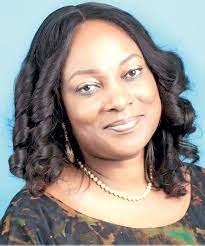
 Opinions4 years ago
Opinions4 years agoTHE PLIGHT OF FARIDA
-

 News9 months ago
News9 months agoFAILED COUP IN BURKINA FASO: HOW TRAORÉ NARROWLY ESCAPED ASSASSINATION PLOT AMID FOREIGN INTERFERENCE CLAIMS
-

 Opinions4 years ago
Opinions4 years agoPOLICE CHARGE ROOMS, A MINTING PRESS
-

 News2 years ago
News2 years agoEYN: Rev. Billi, Distortion of History, and The Living Tamarind Tree
-
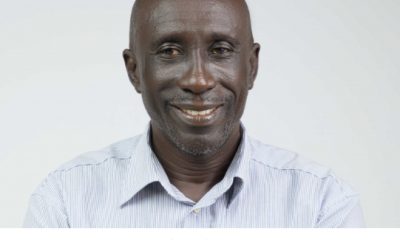
 ACADEMICS2 years ago
ACADEMICS2 years agoA History of Biu” (2015) and The Lingering Bura-Pabir Question (1)
-

 Columns2 years ago
Columns2 years agoArmy University Biu: There is certain interest, but certainly not from Borno.
-

 Opinions2 years ago
Opinions2 years agoTinubu,Shettima: The epidemic of economic, insecurity in Nigeria





